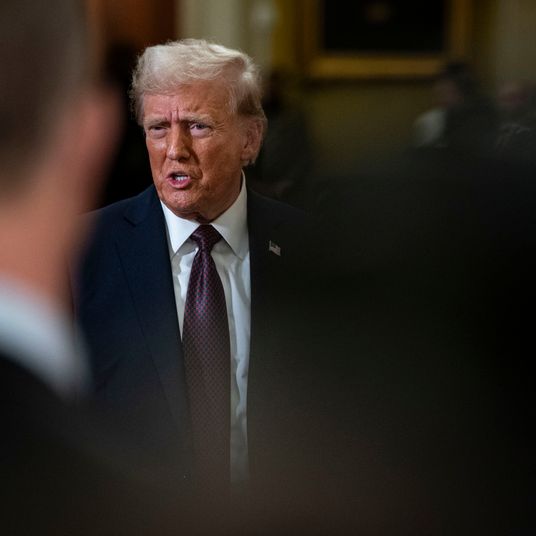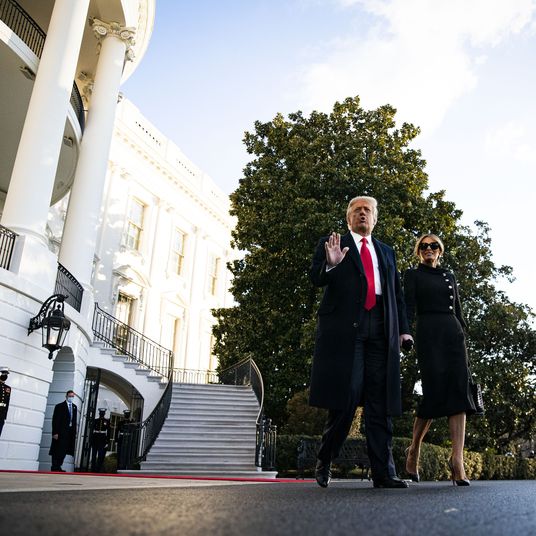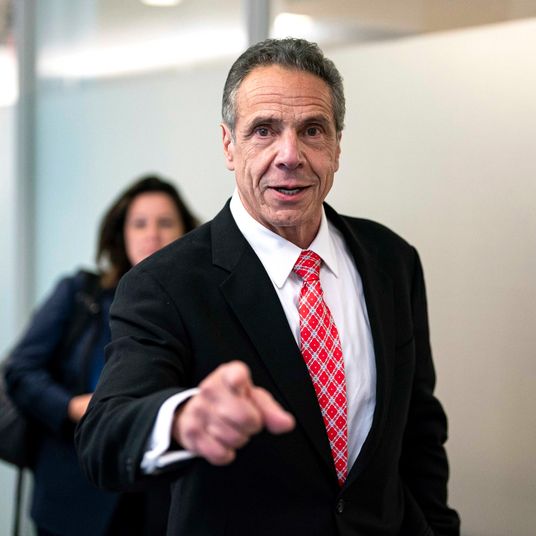
To no one’s surprise, Donald Trump won all five northeastern states (in what the Beltway folk called the Acela Primary) that voted on April 26. The margins and the delegate haul, however, were indeed surprising.
Trump won well over 100 delegates, not counting the undoubted number he should ultimately pick up from Pennsylvania where 54 district delegates are unbound, but a significant number are either Trump people or have pledged to support the district winner (which was usually Trump). That’s above the number Nate Silver penciled in a couple of weeks ago for what Trump would need to stay on the path to 1,237, clinch the nomination, and put an end to all the “contested convention” talk. Aside from proportional results in Rhode Island, his two rivals were very nearly shut out.
But putting aside the delegate count, Trump continues to wreak havoc on the comfortable myths his opponents advanced earlier in the cycle to convince themselves he’d peak early and then fade. Remember Trump’s “ceiling” of 35 percent or 40 percent of the popular vote? He won majorities in all five April 26 states and was above or near 60 percent in four of them. Remember how he was weak among late deciders and almost always fell below his pre-primary poll numbers? Not this time: He’s exceeding his final polling averages across the board. And do you recall the predictions that he’d do poorly in closed primaries when his disproportionately independent and marginal voting base would not turn out? Of the April 26 states, only Rhode Island was open to indies.
Trump’s northeastern sweep was so total that it probably wouldn’t have mattered, except at the margins, if his opponents had implemented their “deal” a bit earlier.
And with Trump nearing 1,000 bound delegates with a near-certain significant haul still ahead in West Virginia on May 10, and in New Jersey and California on June 7, the May 3 Indiana primary is looking like a must-win not only for Ted Cruz — the candidate who’s been battling Trump for the lead there in recent polls — but perhaps for the entire Stop Trump enterprise and the contested convention it’s counting on. With a statewide and district winner-take-all system, Indiana could deny Trump most of its delegates and keep hope alive for his opponents, who would then need to beat him in the Cruz friendly late primaries in Nebraska, Montana, and South Dakota and limit his gains in the proportional contests in Oregon and New Mexico before California, where its 172 delegates decides it all.
Perhaps the grim reality of Trump nearing the prize will sober Republican voters in the home stretch, but the current evidence is that they’re hitting the bottle like it’s ten minutes ’til closing time, which in terms of this nomination process, it may well be.






























